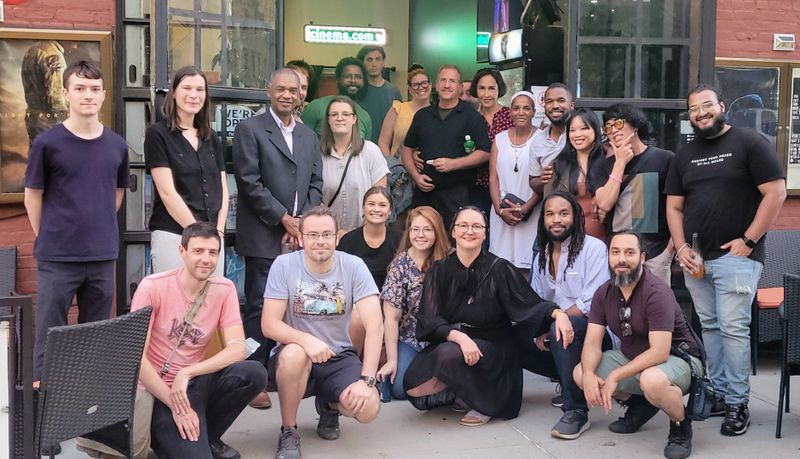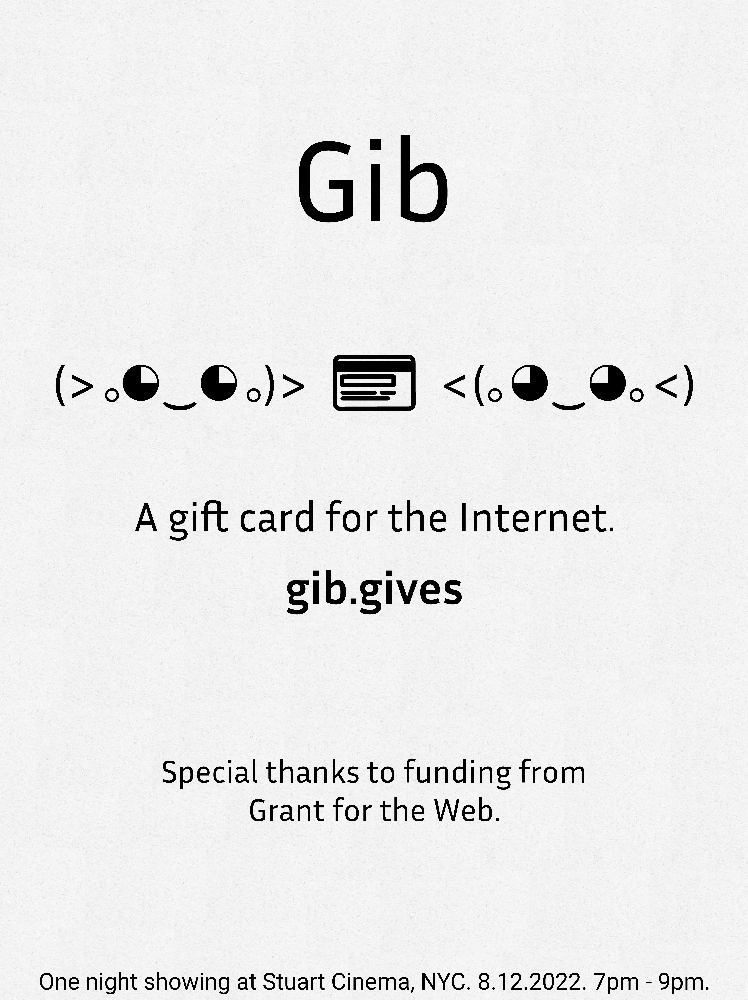Project Update
After six exciting months, we are proud to present our work from this grant cycle! We were able to end on a great note, by showing our work to our local community (pic above). Along with technical development, it's important to us to be able to communicate our idea to everyone. So we invited a group of friends, family, co-workers, and the general public, all from different backgrounds, to share their first impressions of our project in our first ever public screening and demo!
Progress on objectives
In broad strokes, our intentions were to work with legal counsel and technical talent to carefully and correctly implement a working demo of our project, Gib - a gift card for the Internet. We were also very interested in Rafiki (an open source tool for building Interledger-powered applications), so we set a goal for ourselves to submit at least one pull request to their GitHub repository. Last, but not least, we wanted to create public facing media. Initially, we also intended develop technical blogs. In the end, however, our technical writing was mostly for commenting out code and our inspiration for public facing media became more playful. We decided instead to create a concise 90 second explainer video. It is with a deep sigh of relief that we share in this update that we were able to fulfill each of our goals!
Key activities
Money Transmitter License
We quickly became aware of the significance of acquiring a money transmitter license for our product. We were fortunate enough to have a few leads on securing specialized counsel to guide us - the most promising of which was a professional Adelya met a few years ago at a NYC panel about blockchain technology. Through this connection, and a few months of meetings, we were able to secure a contractual relationship with Kimberly Monty Holzel, a partner at Goodwin Procter LLP. She has been instrumental in helping us understand how our product will trigger various compliance needs as it matures.
For reference, we are currently based in NYC and while we aim to make a product that is compliant globally, we figured we should focus on local compliance first, then nationwide and so-forth. As an interesting side note, we previously had web monetization enabled on our company website, astar.app, by way of an Uphold wallet. It has since been disabled as Uphold works with the Department of Financial Services (DFS) in the State of New York to obtain a BitLicense (most recent date of notice 7.11.22).
Kim helped us understand how we can plan the growth of our business with respect to various compliance triggers. The advice helped us understand how to grow strategically, beginning with a closed loop (vendor specific) card that also includes (initially) daily transaction limits per user. We consider this to be a “walk before you run” growth path.
Hiring Techs
We were very excited to expand our technical team with a new hire! We learned an important lesson on how difficult it can be to hire the right fit and how valuable a good working relationship is. After a lot of searching, we were lucky to find a full-stack developer, Tyler Altenhofen. Tyler saw our post on the Recurse Center's network. If you are not familiar with the Recurse Center, it is a revolutionary programming retreat/residency in Brooklyn, NY (link), and a program which our team member Alex was also a part of.
In hindsight, we really appreciated Tyler’s agility and flexibility navigating a nascent technical environment. While we originally hired him as a TypeScript developer, we decided our initial build will be a JavaScript implementation.
Working Through Various Implementations of ILP
It was very important for us to be adaptable when building this project. We initially set out to build a TypeScript-based payment manager using Interledger’s Rafiki package. However, we realized that the development infrastructure necessary for our project’s success would be better off built from an even lower level. Tangential to this, the PR we submitted to Rafiki arose from a snag we had setting up the early-stage package on our own hardware.
We ultimately decided that we would set up a JavaScript and Rust based implementation, hosted on Linode, that would allow users to easily interact with the product. We developed a Docker image of our Gib backend using interledger-rs, which allows us to set up a Gib Interledger connector on any Docker-enabled host. This is a critical step in the open sourcing of this Gib build because it should allow any developer to spin up an ILP connector with Gib for their own closed-loop gift card.
Communications and Marketing
Our communication and marketing efforts are our website deliverable, gib.gives, which has our interactive demo and our explainer video aimed at the general public.
What’s Next?
Next we will slightly shift gears from tech to economics and legal due diligence. We want to focus on implementing a contractual relationship with a vendor for a closed-loop Gib deployment. This will involve working with our lawyers, as well as bringing on resources for market research.
What Community Support Would Benefit Your Project?
We would really appreciate it if folks would try out our demo and leave feedback!






Oldest comments (0)